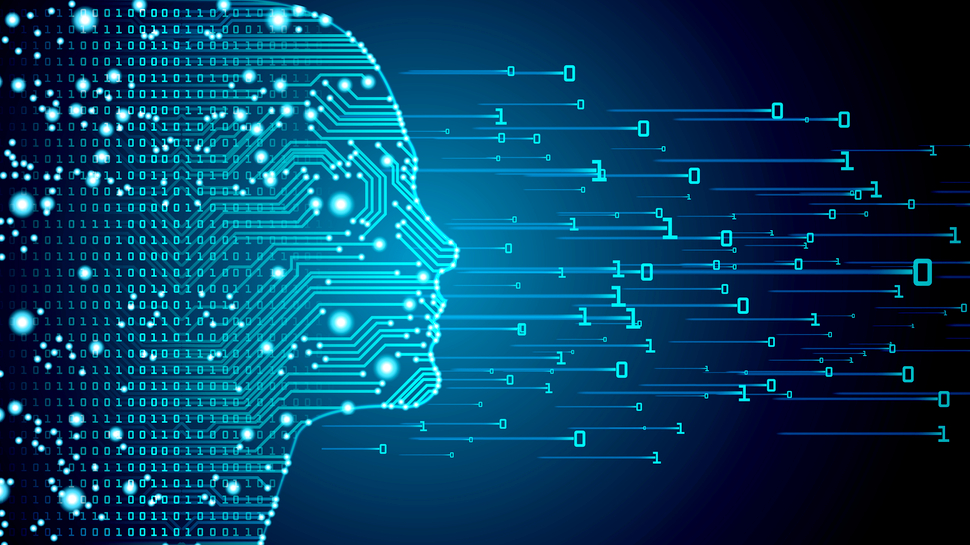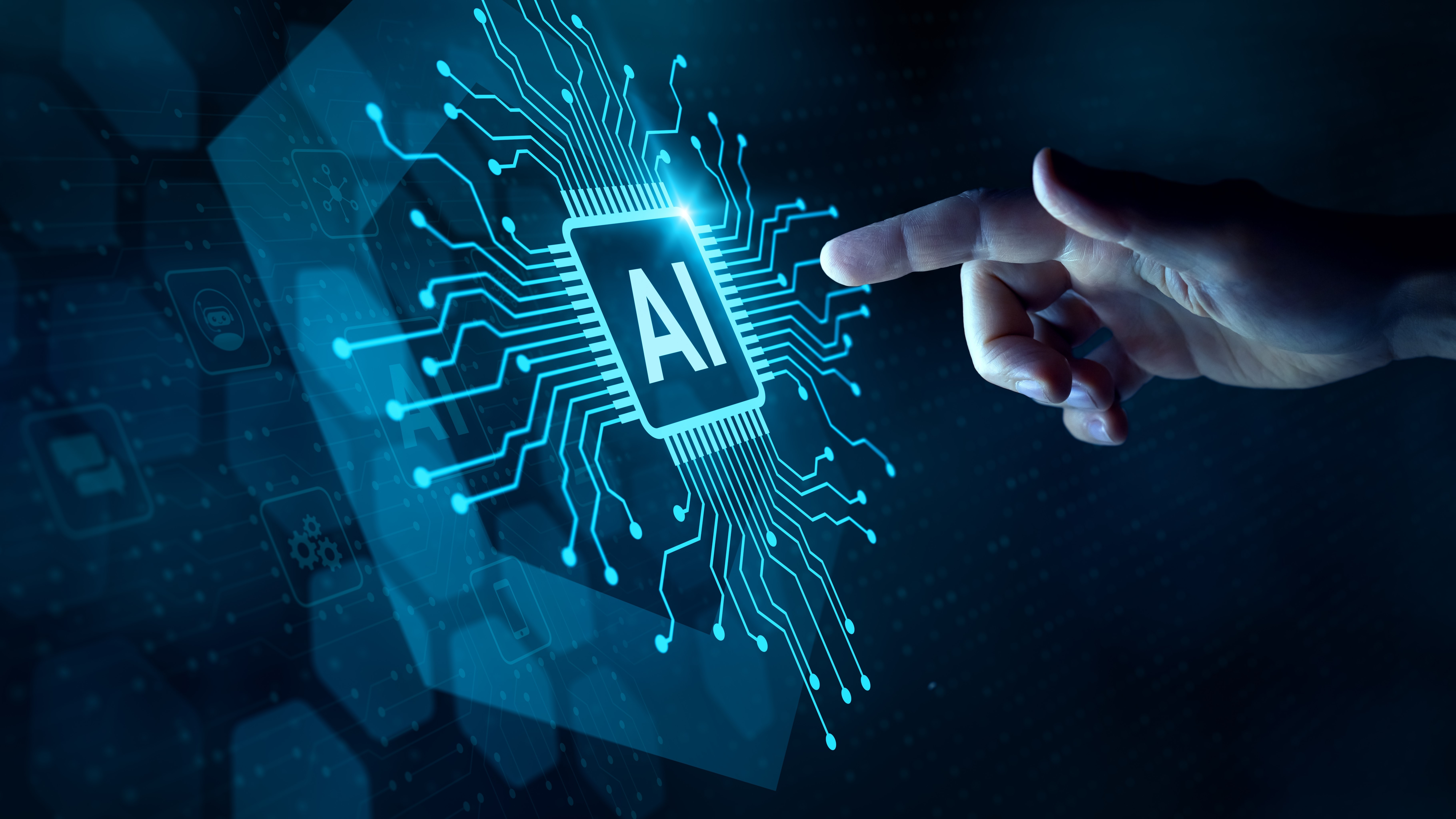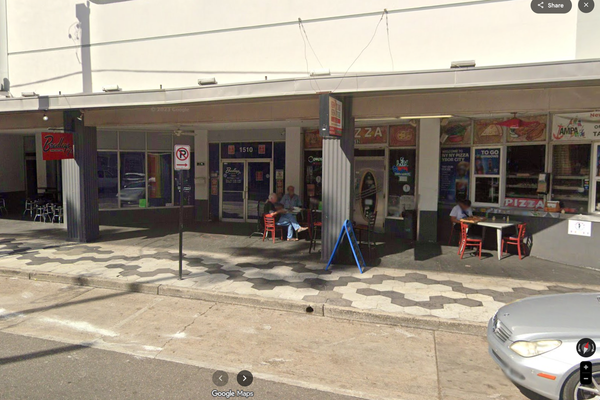
In the world of artificial intelligence (AI), you may have come across the term “token” more times than you can count. If they mystify you, don’t worry - tokens aren’t as mysterious as they sound. In fact, they’re one of the most fundamental building blocks behind AI's ability to process language. You can imagine tokens as the Lego pieces that help AI models construct worthwhile sentences, ideas, and interactions.
Whether it’s a word, a punctuation mark, or even a snippet of sound in speech recognition, tokens are the tiny chunks that allow AI to understand and generate content. Ever used a tool like ChatGPT or wondered how machines summarize or translate text? Chances are, you've encountered tokens without even realizing it. They're the behind-the-scenes crew that makes everything from text generation to sentiment analysis tick.
In this guide, we’ll unravel the concept of tokens - how they’re used in natural language processing (NLP), why they’re so critical for AI, and how this seemingly small detail plays a huge role in making the best AI tools smarter.
So, get ready for a deep dive into the world of tokens, where we'll cover everything from the fundamentals to the exciting ways they're used.
What is a token in AI?
Think of tokens as the tiny units of data that AI models use to break down and make sense of language. These can be words, characters, subwords, or even punctuation marks - anything that helps the model understand what’s going on.
For instance, in a sentence like "AI is awesome," each word might be a token. However, for trickier words, like “tokenization,” the model might break them into smaller chunks (subwords) to make them easier to process. This helps AI handle even the most complex or unusual terms without breaking a sweat.
In a nutshell, tokens are the building blocks that let AI understand and generate language in a way that makes sense. Without them, AI would be lost in translation.
Which types of tokens exist in AI?
Depending on the task, these handy data units can take a whole variety of forms. Here’s a quick tour of the main types:
- Word tokens - These are straightforward: each word is its own token. For instance, in "AI simplifies life," the tokens are AI, simplifies, and life.
- Subword tokens - Sometimes words get fancy, so they’re broken into smaller, meaningful pieces. For example, "unbreakable" might become un, break, and able. This helps AI deal with tricky words.
- Character tokens - Each character stands on its own. For "Hello," the tokens are H, e, l, l, and o. This method is great for languages or data with no clear word boundaries.
- Punctuation tokens - Even punctuation marks get their moment in the spotlight! In "AI rocks!" the tokens include !, because AI knows punctuation matters.
- Special tokens - Think of these as AI’s backstage crew. Tokens like (beginning of sequence) or (unknown word) help models structure data and handle the unexpected.
Every token type pulls its weight, helping the system stay smart and adaptable.
What is tokenization in AI and how it works?
Tokenization in NLP is all about splitting text into smaller parts, known as tokens - whether they’re words, subwords, or characters. It’s the starting point for teaching AI to grasp human language.
Here’s how it goes - when you feed text into a language model like GPT, the system splits it into smaller parts or tokens. Take the sentence "Tokenization is important" - it would be tokenized into “Tokenization,” “is,” and “important.” These tokens are then converted into numbers (vectors) that AI uses for processing.
The magic of tokenization comes from its flexibility. For simple tasks, it can treat every word as its own token. But when things get trickier, like with unusual or invented words, it can split them into smaller parts (subwords). This way, the AI keeps things running smoothly, even with unfamiliar terms.
Modern models, like GPT-4, work with massive vocabularies - around 50,000 tokens. Every piece of input text is tokenized into this predefined vocabulary before being processed. This step is crucial because it helps the AI model standardize how it interprets and generates text, making everything flow as smoothly as possible.
By chopping language into smaller pieces, tokenization gives AI everything it needs to handle language tasks with precision and speed. Without it, modern AI wouldn't be able to work its magic.
Why are tokens important in AI?
Tokens are more than just building blocks - they’re what make AI tick. Without them, AI couldn’t process language, understand nuances, or generate meaningful responses. So, let’s break it down and see why tokens are so essential to AI’s success:
Breaking down language for AI
When you type something into an AI model, like a chatbot, it doesn’t just take the whole sentence and run with it. Instead, it chops it up into bite-sized pieces called tokens. These tokens can be whole words, parts of words, or even single characters. Think of it as giving the AI smaller puzzle pieces to work with - it makes it much easier for the model to figure out what you’re trying to say and respond smartly.
For example, if you typed, "Chatbots are helpful," the AI would split it into three tokens: "Chatbots," "are," and "helpful." Breaking it down like this helps the AI focus on each part of your sentence, making sure it gets what you're saying and gives a spot-on response.
Understanding context and nuance
Tokens truly shine when advanced models like transformers step in. These models don’t just look at tokens individually - they analyze how the tokens relate to one another. This lets AI grasp the basic meaning of words as well as the subtleties and nuances behind them.
Imagine someone saying, "This is just perfect." Are they thrilled, or is it a sarcastic remark about a not-so-perfect situation? Token relationships help AI understand these subtleties, enabling it to provide spot-on sentiment analysis, translations, or conversational replies.
Data representation through tokens
Once the text is tokenized, each token gets transformed into a numerical representation, also known as a vector, using something called embeddings. Since AI models only understand numbers (so, no room for raw text), this conversion lets them work with language in a way they can process. These numerical representations capture the meaning of each token, helping the AI do things like spotting patterns, sorting through text, or even creating new content.
Without tokenization, AI would struggle to make sense of the text you type. Tokens serve as the translator, converting language into a form that AI can process, making all its impressive tasks possible.
Tokens’ role in memory and computation
Every AI model has a limit on how many tokens it can handle at once, and this is called the "context window." You can think of it like the AI’s attention span - just like how we can only focus on a limited amount at a time. By understanding how tokens work within this window, developers can optimize how the AI processes information, making sure it stays sharp.
If the input text becomes too long or complex, the model prioritizes the most important tokens, ensuring it can still deliver quick and accurate responses. This helps keep the AI running smoothly, even when dealing with large amounts of data.
Optimizing AI models with token granularity
One of the best things about tokens is how flexible they are. Developers can adjust the size of the tokens to fit different types of text, giving them more control over how the AI handles language. For example, using word-level tokens is perfect for tasks like translation or summarization, while breaking down text into smaller subwords helps the AI understand rare or newly coined words.
This adaptability lets AI models be fine-tuned for all sorts of applications, making them more accurate and efficient in whatever task they're given.
Enhancing flexibility through tokenized structures
By breaking text into smaller, bite-sized chunks, AI can more easily navigate different languages, writing styles, and even brand-new words. This is especially helpful for multilingual models, as tokenization helps the AI juggle multiple languages without getting confused.
Even better, tokenization lets the AI take on unfamiliar words with ease. If it encounters a new term, it can break it down into smaller parts, allowing the model to make sense of it and adapt quickly. So whether it’s tackling a tricky phrase or learning something new, tokenization helps AI stay sharp and on track.
Making AI faster and smarter
Tokens are more than just building blocks - how they're processed can make all the difference in how quickly and accurately AI responds. Tokenization breaks down language into digestible pieces, making it easier for AI to understand your input and generate the perfect response. Whether it's conversation or storytelling, efficient tokenization helps AI stay quick and clever.
Cost-effective AI
Tokens are a big part of how AI stays cost-effective. The number of tokens processed by the model affects how much you pay - more tokens lead to higher costs. By using fewer tokens, you can get faster and more affordable results, but using too many can lead to slower processing and a higher price tag. Developers should be mindful of token use to get great results without blowing their budget.
Now that we’ve got a good grip on how tokens keep AI fast, smart, and efficient, let’s take a look at how tokens are actually used in the world of AI.

What are the applications of tokens in AI?
Tokens help AI systems break down and understand language, powering everything from text generation to sentiment analysis. Let's look at some ways tokens make AI so smart and useful.
AI-powered text generation and finishing touches
In models like GPT or BERT, the text gets split into tokens - little chunks that help the AI make sense of the words. With these tokens, AI can predict what word or phrase comes next, creating everything from simple replies to full-on essays. The more seamlessly tokens are handled, the more natural and human-like the generated text becomes, whether it's crafting blog posts, answering questions, or even writing stories.
AI breaks language barriers
Ever used Google Translate? Well, that’s tokenization at work. When AI translates text from one language to another, it first breaks it down into tokens. These tokens help the AI understand the meaning behind each word or phrase, making sure the translation isn’t just literal but also contextually accurate.
For example, translating from English to Japanese is more than just swapping words - it’s about capturing the right meaning. Tokens help AI navigate through these language quirks, so when you get your translation, it sounds natural and makes sense in the new language.
Analyzing and classifying feelings in text
Tokens are also pretty good at reading the emotional pulse of text. With sentiment analysis, AI looks at how text makes us feel - whether it’s a glowing product review, critical feedback, or a neutral remark. By breaking the text down into tokens, AI can figure out if a piece of text is positive, negative, or neutral in tone.
This is particularly helpful in marketing or customer service, where understanding how people feel about a product or service can shape future strategies. Tokens let AI pick up on subtle emotional cues in language, helping businesses act quickly on feedback or emerging trends.
Now, let’s explore the quirks and challenges that keep tokenization interesting.
Complexity and challenges in tokenization
While breaking down language into neat tokens might seem easy, there are some interesting bumps along the way. Let’s take a closer look at the challenges tokenization has to overcome.
Ambiguous words in language
Language loves to throw curveballs, and sometimes it’s downright ambiguous. Take the word "run" for instance - does it mean going for a jog, operating a software program, or managing a business? For tokenization, these kinds of words create a puzzle.
The tokenizers have to figure out the context and split the word in a way that makes sense. Without seeing the bigger picture, the tokenizer might miss the mark and create confusion.
Polysemy and the power of context
Some words act like chameleons - they change their meaning depending on how they’re used. Think of the word "bank." Is it a place where you keep your money, or is it the edge of a river? Tokenizers need to be on their toes, interpreting words based on the surrounding context. Otherwise, they risk misunderstanding the meaning, which can lead to some hilarious misinterpretations.
Understanding contractions and combos
Contractions like "can’t" or "won’t" can trip up tokenizers. These words combine multiple elements, and breaking them into smaller pieces might lead to confusion. Imagine trying to separate "don’t" into "do" and "n’t" - the meaning would be completely lost.
To maintain the smooth flow of a sentence, tokenizers need to be cautious with these word combos.
Recognizing people, places, and things
Now, let’s talk about names - whether it’s a person’s name or a location, they’re treated as single units in language. But if the tokenizer breaks up a name like “Niagara Falls” or “Stephen King” into separate tokens, the meaning goes out the window.
Getting these right is crucial for AI tasks like recognizing specific entities, so misinterpretation could lead to some embarrassing errors.
Tackling out-of-vocabulary words
What happens when a word is new to the tokenizer? Whether it’s a jargon term from a specific field or a brand-new slang word, if it’s not in the tokenizer’s vocabulary, it can be tough to process. The AI might stumble over rare words or completely miss their meaning.
It’s like trying to read a book in a language you’ve never seen before.
Dealing with punctuation and special characters
Punctuation isn’t always as straightforward as we think. A single comma can completely change the meaning of a sentence. For instance, compare "Let’s eat, grandma" with "Let’s eat grandma." The first invites grandma to join a meal, while the second sounds alarmingly like a call for cannibalism.
Some languages also use punctuation marks in unique ways, adding another layer of complexity. So, when tokenizers break text into tokens, they need to decide whether punctuation is part of a token or acts as a separator. Get it wrong, and the meaning can take a very confusing turn, especially in cases where context heavily depends on these tiny but crucial symbols.
Handling multilingual world
Things get even trickier when tokenization has to deal with multiple languages, each with its structure and rules. Take Japanese, for example - tokenizing it is a whole different ball game compared to English. Tokenizers have to work overtime to make sense of these languages, so creating a tool that works across many of them means understanding the unique quirks of each one.
Tokenizing at a subword level
Thanks to subword tokenization, AI can tackle rare and unseen words like a pro. However, it can also be a bit tricky. Breaking down words into smaller parts increases the number of tokens to process, which can slow things down. Imagine turning “unicorns” into “uni,” “corn,” and “s.” Suddenly, a magical creature sounds like a farming term.
Finding the sweet spot between efficiency and meaning is a real challenge here - too much breaking apart, and it might lose the context.
Tackling noise and errors
Typos, abbreviations, emojis, and special characters can confuse tokenizers. While it’s great to have tons of data, cleaning it up before tokenization is a must. But here’s the thing - no matter how thorough the cleanup, some noise just won’t go away, making tokenization feel like solving a puzzle with missing pieces.
The trouble with token length limitations
Now, let’s talk about token length. AI models have a max token limit, which means if the text is too long, it might get cut off or split in ways that mess with the meaning. This is especially tricky for long, complex sentences that need to be understood in full.
If the tokenizer isn't careful, it could miss some important context, and that might make the AI's response feel a little off.
What does the future hold for tokenization?
As AI systems become more powerful, tokenization techniques will evolve to meet the growing demand for efficiency, accuracy, and versatility. One major focus is speed - future tokenization methods aim to process tokens faster, helping AI models respond in real-time while managing even larger datasets. This scalability will allow AI to take on more complex tasks across a wide range of industries.
Another promising area is context-aware tokenization, which aims to improve AI’s understanding of idioms, cultural nuances, and other linguistic quirks. By grasping these subtleties, tokenization will help AI produce more accurate and human-like responses, bridging the gap between machine processing and natural language.
As expected, the future isn’t limited to text. Multimodal tokenization is set to expand AI’s capabilities by integrating diverse data types like images, videos, and audio. Imagine an AI that can seamlessly analyze a photo, extract key details, and generate a descriptive narrative - all powered by advanced tokenization. This innovation could transform fields such as education, healthcare, and entertainment with more holistic insights.
With blockchain’s rise, AI tokens could facilitate secure data sharing, automate smart contracts, and democratize access to AI tools. These tokens can transform industries like finance, healthcare, and supply chain management by boosting transparency, security, and operational efficiency.
Quantum computing offers another game-changing potential. With its ability to process massive datasets and handle complex calculations at unprecedented speeds, quantum-powered AI could revolutionize tokenization, enhancing both speed and sophistication in AI models.
As AI pushes boundaries, tokenization will keep driving progress, ensuring technology becomes even more intelligent, accessible, and life-changing. The future looks bright and full of potential.
Navigating an ever-changing tokenization terrain
Navigating tokenization might seem like exploring a new digital frontier, but with the right tools and a bit of curiosity, it’s a journey that’s sure to pay off. As AI evolves, tokens are at the heart of this transformation, powering everything from chatbots and translations to predictive analytics and sentiment analysis.
We’ve explored the fundamentals, challenges, and future directions of tokenization, showing how these small units are driving the next era of AI. So, whether you’re dealing with complex language models, scaling data, or integrating new technologies like blockchain and quantum computing, tokens are the key to unlocking it.







